How To Maximize THC in Feminized Cannabis Seeds
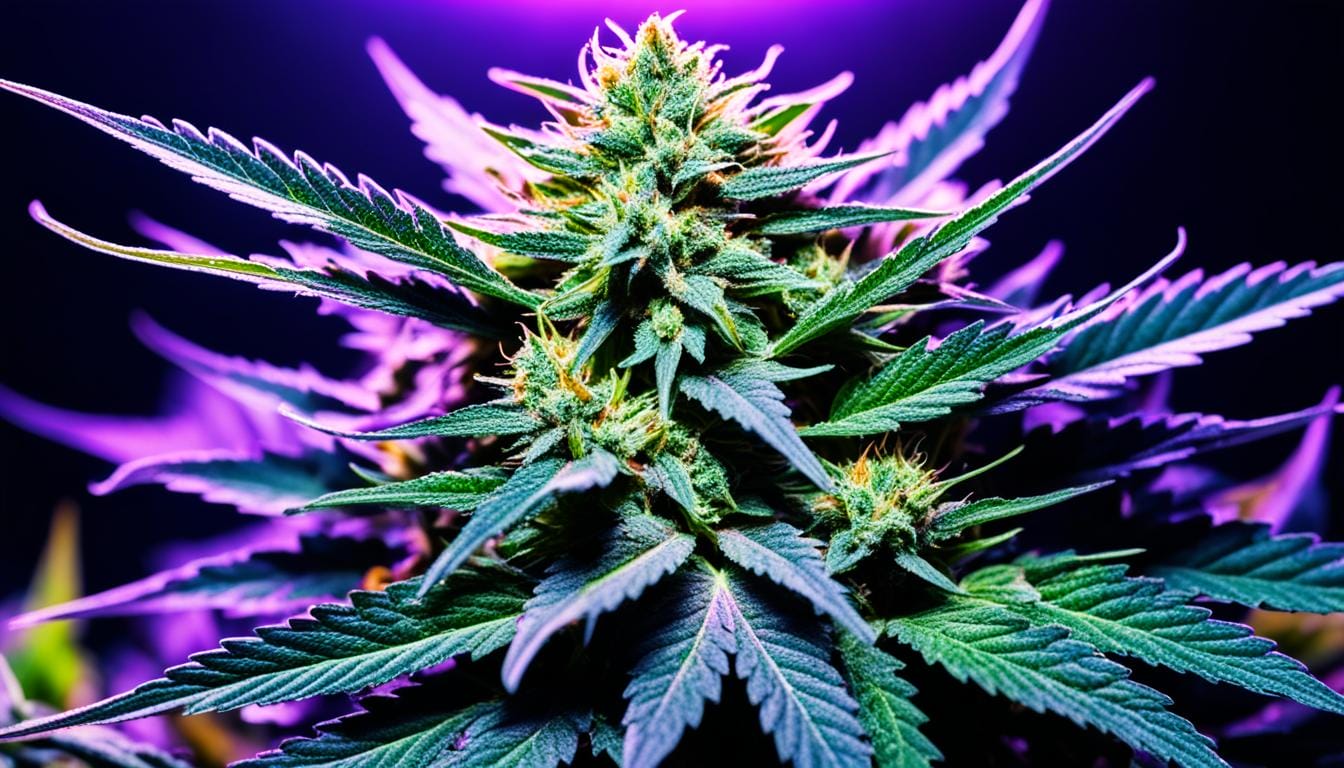
You might find it astonishing, but feminized marijuana seeds are now capable of producing cannabis strains with up to 30% THC content – boasted as some of the most potent on the market. This radical breakthrough in genetic improvement has drastically changed the panorama of potency in cannabis cultivation. Today, breeders and cultivators alike aim to maximize THC in cannabis, both for its recreational euphoria and for its multitude of therapeutic effects. Fulfilling the increasing consumer demand for cannabinoid-rich products has prompted a surge in approaches to optimize the THC potency in marijuana. This article delves into the various strategies growers can implement to reap the most from their high-THC feminized cannabis seeds, from seed selection to cultivation techniques, to environmental optimization and harvest timing. Let’s dive in and discover the secrets behind maximizing the potency of your cannabis plant.
Key Takeaways
- Genetics are critical in growing high-THC cannabis strains; seeds with naturally high THC concentrations are today’s game-changers in the cannabis industry.
- Maintaining optimal plant health through refining cultivation parameters and avoiding stressors can greatly increase THC production.
- Environmental conditions such as temperature and humidity significantly influence THC potency.
- Choosing the correct lighting and understanding light cycles is crucial for THC synthesis in cannabis plants.
- Optimizing harvest timing ensures that THC levels are at their peak during collection.
- Advanced growing techniques and post-harvest processes can further enhance the THC concentration in feminized cannabis seeds.
Understanding the Importance of Genetics in THC Production
The foundation of high THC production in cannabis lies in the genetics of the seeds. When seeking to enhance THC content in your cannabis plants, the significance of selecting from feminized cannabis seeds known for high THC production cannot be understated.
Some strains can reach a THC content of up to 30%, becoming a natural choice for those aiming to maximize THC levels. However, the choice of genetics doesn’t rely solely on potential THC content. Other factors, including flowering speed, pest resistance, and nutritional requirements, can significantly impact the overall yield and THC production.
For home growers, sensory aspects like aroma and flavor also come into play when deciding on the genetics to grow. On the other hand, professional cultivators often look to detailed production metrics, focusing on such elements as grams of THC per square meter.
In fact, let’s take a closer look at the key factors that reliable cannabis cultivation tips highlight when selecting the right genetics:
| Factor | Why It’s Important |
|---|---|
| High THC Content | Genetics with high THC potential are the foundation for maximizing your plants’ THC production. |
| Flowering Speed | Faster flowering times can streamline the cultivation process, resulting in quicker harvests. |
| Pest Resistance | Plants genetically predisposed to resist pests can save cultivators from a lot of potential trouble. |
| Nutritional Requirements | Understanding the nutritional needs of a strain can optimize growth and enhance THC levels. |
All in all, when it comes to maximizing THC, the key lies in the careful choice of genetics to grow. By opting for the right seed genetics, cultivators can strive to achieve their desired THC levels and create a more potent product.
Strategies for Maintaining Optimal Plant Health
For those interested in growing high-THC cannabis, achieving optimal plant health is a cornerstone. This involves careful monitoring of various cultivation parameters and providing the plants with the right conditions to thrive and achieve their full potential. Just like preparing an athlete for a competition, the cannabis plant requires a lot of care and attention.

Monitoring Nutrient Intake for Potency Enhancement
Nutrient intake plays a pivotal role in increasing THC in weed. Similar to how humans require a balanced diet to thrive, cannabis plants also need a mix of macro and micronutrients to grow properly and produce good-quality buds. These nutrients include nitrogen, phosphorus, potassium, magnesium, and calcium, among others. Adjusting the nutrient intake according to the plant’s growing phase can significantly influence the THC potency.
Importance of Regular Health Checks on Plants
Regular checks on your plants can help in the early detection and prevention of diseases and pests. Monitoring the health of leaves, stems, roots, and, most importantly, buds can prevent harm from common cannabis ailments like powdery mildew, mites, and fungi. By spotting signs of plant stress early, you can take corrective actions quickly and prevent a major loss in THC yield.
Preventing Common Stressors in Cannabis Cultivation
Environmental stressors can negatively impact your plant’s overall health and, consequently, its THC levels. Stressors can range from fluctuating temperatures to improper lighting conditions and irregular water supply. It’s crucial to maintain steady and suitable environmental conditions to increase the plant’s THC potency.
Impact of Different Factors on Overall Plant Health
| Factor | Effect on Plant Health |
|---|---|
| Nutrient Intake | Directly influences growth and bud quality. Balancing nutrients per plant’s phase can maximize THC potency. |
| Regular Health Checks | Helps in early detection of diseases and pests, preventing major loss in THC yield. |
| Preventing Stress | Maintaining steady environmental conditions can reduce plant stress and enhance THC production. |
Controlling Temperature and Humidity for High THC Yields
To maximize THC in feminized cannabis seeds, managing the growing conditions is essential. Among these, temperature and humidity play significant roles. These elements not only affect the general health and growth rate of the plant but also influence the production of cannabinoids, including THC.
Temperature significantly impacts the plant’s metabolic processes, including photosynthesis, respiration, and transpiration – all of which contribute to cannabinoid synthesis. Here, let us discuss the ideal temperatures for optimizing THC production.
| Plant Stage | Ideal Temperature |
|---|---|
| Seedling & Vegging | 20-25ºC (68-77ºF) |
| Flowering | 18-26ºC (64-78ºF) |
| Late Flowering | 18-24ºC (64-75ºF) |
Keep in mind that high temperatures, particularly those above 30ºC, tend to evaporate the volatile terpenes, decreasing the overall cannabinoid content. Hence, it is vital to regulate the grow room’s temperature and maintain it within the ideal range.
Subsequently, controlling the relative humidity within the growing environment plays a major role, too. Humidity affects the rate of plant transpiration, thereby influencing the plant’s water intake and nutrient uptake. Here’s how you can adjust humidity levels at each stage:
- For seedlings and clones, you can keep the humidity levels around 70-75%.
- During the vegetative stage, a relative humidity of 40-70% is preferable.
- While in the flowering stage, maintaining a humidity level between 40-50% is optimal.
- In the late flowering stage, a further drop to 30-40% can promote an increase in resin production, boosting THC levels.
Note: It is essential to monitor these conditions constantly and adjust them as necessary to prevent any stress on the plants, which could hamper their overall performance and THC production.
Investing in quality climate control systems may seem like an extra cost, but the enhanced cannabinoid production justifies the investment. With the proper temperature and humidity control, you can truly maximize the potential of your feminized cannabis seeds.
How Light Influences THC Potency in Cannabis Plants
When cultivating cannabis with high THC content, lighting stands as a pivotal aspect. The right spectrum and intensity can stimulate exceptional growth while promoting high THC production. Indeed, light is one of the primary inputs cannabis plants use to manufacture cannabinoids.

Choosing the Right Grow Lights for Maximum Effect
To maximize THC in cannabis, the choice of grow lights is of utmost importance. While there are various types of lighting options available for cannabis cultivation, a few stand out for their proven effectiveness in enhancing THC production. Full-spectrum LED lamps, Ceramic Metal Halide (CMH), and High-Pressure Sodium (HPS) lights offer excellent results. These light sources provide a spectrum covering the essential photosynthetic range, driving robust plant growth and higher THC contents.
In essence, experts recommend an intensity of around 600W per square meter for indoor cultivation. This lighting strength stimulates plants to reach their full THC potential. In practice, growers often use multiple lamps to cover the growing area adequately and eliminate dark spots, ensuring all plants get an equal light distribution.
Understanding Light Cycles and Their Impact on THC
Another vital aspect to consider when seeking to maximize THC in cannabis is the regulation of light cycles in cannabis cultivation. Simply put, altering the light exposure duration impacts how the cannabis plant grows and synthesizes cannabinoids, including THC.
During the vegetative stage, cannabis thrives on longer light cycles, often 18 hours of light and 6 hours of darkness. Transitioning the plants to the flowering stage involves reducing the light period to 12 hours to mimic natural autumn conditions. Interestingly, this adjustment not only triggers flowering but also induces the plant to produce cannabinoids in abundance.
By understanding these intricate light requirements, you can better manipulate your grow light setup to create optimal conditions that enhance THC production in your cannabis crop.
Exploring the Role of UV Rays in THC Boosting
In our quest to maximize THC potency in feminized cannabis seeds, it’s impossible to dismiss the possible influence of ultraviolet (UV) rays. While UV rays are often perceived negatively due to their harmful effects on human skin, ironically, they might play a beneficial role in boosting THC levels in cannabis.
Scientific Evidence on UV Exposure and Trichome Production
Data surrounding the effect of UV rays on cannabis THC potency is, at best, conflicting. Predominantly, the theory stands that UV rays stimulate trichome production in cannabis plants. Trichomes are the small, resinous crystals covering the buds of mature cannabis plants and are the locus of THC production. Therefore, some conclude that more trichomes equate to more THC.
One widely acclaimed notion suggests that cannabis plants produce trichomes as a defense mechanism against harmful UV rays. Consequently, exposing the plants to increased UV radiation theoretically sparks the creation of extra trichomes, thus elevating their THC potency. While some studies seem to support this theory, others dismiss it, alluding to adverse effects on the plant’s overall health.
Safety Measures When Using UV Lights
Stimulating trichome production via UV rays is enmeshed in controversy, not least because of safety concerns. These concerns predominantly surround the growers who tend to these plants. With some evidence suggesting UV exposure can lead to skin cancer and eye damage, responsible experimentation with UV lighting requires strict safety controls.
Growers working with UV lighting in their indoor operations should always wear protective eyewear. Covering exposed skin around UV lights can safeguard against potential harm, and interaction with bulbs should always be done when lights are off to avoid direct UV exposure.
By deciphering the conflicting evidence, it’s crucial that growers adopt the necessary safety measures when factoring UV rays into their cannabis cultivation practices. In doing so, they can explore innovative ways of maximizing trichome production and possibly THC potency in their feminized cannabis seeds.
How To Ensure Your Feminized Cannabis Seeds Produce the Highest THC Levels
Optimizing the THC potency in your homegrown cannabis starts right from seed selection. Not all cannabis strains and seeds are created equal. Some seeds carry genetic traits that allow them to produce an abundance of curing resin, translating to higher levels of THC potency. Thus, it’s vital that you choose feminized seeds known for their high THC yields. This would set you on a steady path toward your objective.
Proper plant care and a well-monitored nutrition schedule are equally critical to ensuring that your feminized cannabis seeds yield dense, resin-rich buds. Care for your cannabis plants like you would tend to prized garden roses – with diligence, meticulousness, and of course, love. Your reward would be in the form of an exceptional harvest of potent, THC-rich cannabis.
Temperature and humidity control are another crucial aspect in rearing high-THC cannabis plants. Too high a temperature evaporates terpenes, reducing cannabinoid production. A smart way to navigate this is to maintain the temperature below 25ºC and regulate humidity during the flowering phase to spur resin and cannabinoid production.
Proper lighting, like Goldilocks’ porridge, should be just right. While inadequate light wouldn’t serve the purpose, too harsh lighting could damage the plant. Therefore, balance is key in illuminating your grow space. A harmonious blend of full-spectrum LED lamps, CMH, or HPS lights has been found to be most effective in ensuring the blossoming of your cannabis plants. Thus, having a well-lit grow space certainly complements your goal of producing a high THC yield.
The potential impact of UV rays on boosting THC production in cannabis plants has been a subject of recent interest among cannabis enthusiasts and horticulturalists. Increasing UV exposure may initiate a defense mechanism in marijuana plants leading them to produce more resin and THC. However, caution would be wise while experimenting using UV lights.
“For every component of cannabis cultivation, the devil is in the details.”
Now that we have discussed these crucial aspects, let’s summarize the key factors that can influence THC potency in cannabis plants in the following table:
| Factor | Role in THC Production |
|---|---|
| Seed Selection | Choose strains known for high THC yields. |
| Plant Care and Nutrition | Provide well-balanced nutrients and regular plant care. |
| Temperature and Humidity Control | Maintain optimal temperature and carefully regulate humidity. |
| Lighting | Effective use of LED, CMH, or HPS lights. |
| UV Rays | Consider experimenting with UV rays exposure, while exercising safety measures. |
To sum it up, a harmonious blend of high-quality feminized seeds, meticulous plant care, precise temperature and humidity control, shrewd lighting setup, and judicious use of UV rays can inevitably play a crucial role in maximizing your cannabis crop’s THC potency.
Cannabis Harvest: Timing for Peak THC Content
As every cannabis grower knows, timing is everything when it comes to harvesting. The optimum harvest point is crucial for ensuring that feminized seeds will produce cannabis with the peak THC content.
Getting the timing right involves careful observation and knowledge of the plant’s development, particularly the behavior of trichomes. Trichomes are the little, hair-like growths on the cannabis plant where most of the THC is produced.
Deciphering the Signs of Peak Maturity in Cannabis
Once your plant reaches maturity, the trichomes will turn from clear to milky white. This color change signals the peak of THC production. From this point, THC begins to degrade if left unharvested.
Therefore, monitoring the color of the trichomes becomes one of the most potent tools at the cultivators’ disposal in gauging the optimum harvest point. Harvesting at the right time allows for maximum THC potency in your yields.
Understanding Trichomes and Harvest Timing
The following table provides more insight into the relationship between trichome development stages and THC content.
| Trichome Stage | Description | THC Content |
|---|---|---|
| Clear | Trichomes appear clear and glassy, the plant is not fully mature. | Lower THC, less potent yield. |
| Cloudy/Milky White | Sign of maturity, THC production has peaked. | High THC, peak potency. |
| Amber/Brown | Sign of over-ripeness, THC has begun to degrade into CBN. | Lower THC, more sedative effects. |
As the table indicates, peak THC content is reached when the majority of the trichomes have turned milky white. Harvesting during this period ensures you get the most potent yield from your feminized seeds.
Optimizing Fertilization Practices for THC Enhancement
Nurturing feminized cannabis seeds to produce the most potent THC levels requires careful consideration of fertilization. Aside from light, water, and temperature, nutrients are necessary building blocks in the development of any plant, including cannabis. Its relationship with THC production is undeniable.
Fertilization plays a vital role in the life cycle of a cannabis plant. The use of supplements and nutrients specifically tailored to the flowering stage can stimulate trichome development and, consequently, promote the accumulation of THC.
Optimizing the THC levels your plants generate is not merely a case of applying more fertilizer. On the contrary, it is a delicate dance of understanding the cannabis plant’s requirements at various stages, maintaining a balance, and enhancing environmental factors to support THC biosynthesis.
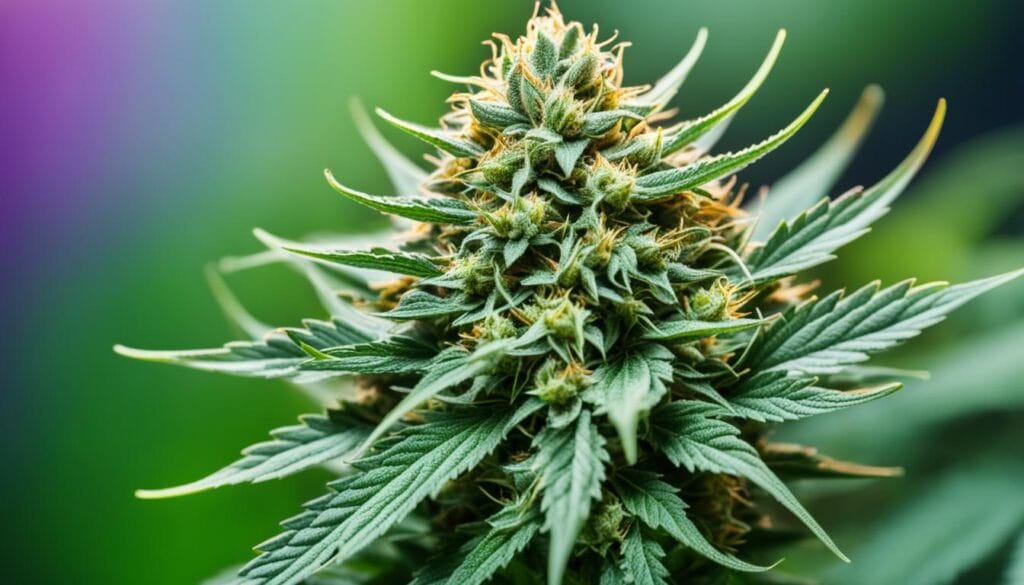
One important aspect to consider is maintaining the integrity of the trichomes against environmental factors. These tiny, glandular structures on the cannabis flower are the source of resin production where THC is produced. Preservation of their delicate structures is crucial to maximizing THC production.
Careful management of the feed supplement regime is integral to this process. Overfeeding can ‘burn’ plants, leading to lower THC levels, while underfeeding can leave them malnourished, stunting their growth and ability to produce THC. The key here is to find the ‘Goldilocks zone’ in terms of fertilization—not too much, not too little, but just right.
| Stages of Growth | Nutrient Requirement | Functionality |
|---|---|---|
| Vegetative Stage | Nitrogen, Potassium, and Phosphorus | Promotes growth of plant tissue and prepares the plant for blooming |
| Blooming Stage | Lower Nitrogen, Higher Phosphorus, and Potassium | Encourages flowering, bud growth, and boosts THC level |
| Late Flowering Stage | Lower Nitrogen, Phosphorus, and Potassium | Promotes plant health and ripening of buds |
Expensive fertilizers are not necessarily a ticket to achieving superior-quality buds. A seasoned cultivator often enhances the quality of the plant by managing micro and macronutrients’ timing and quantity. Remember, the goal is not only to grow the plant but also to guide it toward producing superior feminized cannabis seeds with optimal THC levels.
A perfect blend of knowledge, experimentation, and patience will enrich your cannabis cultivation skills. The result? Overflowing jars filled with superior quality buds.
Stay tuned to this series for more insightful cannabis cultivation tips on maximizing your cannabis cultivation success!
Growing Techniques That May Impact THC Levels
If you are seeking ways to elevate the THC content in your feminized seeds for high THC, you will need to explore some advanced growing techniques. Methods such as stress training and the selection of nutrients can have a significant impact on THC levels in cannabis.
The Potential of Stress Training Methods
Stress training techniques are known for increasing cannabis yield and potency. These encompass practices like pruning, bending, and super cropping, which, when effectively applied, can help maximize the amount of THC your cannabis plant produces. These methods help shape the plant to expose more bud sites to direct light, and some growers believe the plant’s response to mild stress can stimulate increased THC production.
Organic vs. Synthetic Nutrients and Their Effects on Potency
Another area where growers often focus their attention is the type of nutrients they provide to their cannabis plants. The use of organic and synthetic nutrients can influence the potency of your cannabis, although the best choice can depend on several factors. Here is a simple table highlighting the pros and cons of both to assist you in your cannabis cultivation journey.
| Type of Nutrient | Pros | Cons |
|---|---|---|
| Organic Nutrients | Improved flavor and quality of buds, environmentally friendly, promotes beneficial microbial life. | More challenging to manage nutrient ratios, slower to absorb. |
| Synthetic Nutrients | Fast absorption, nutrients can be managed precisely. | Can damage beneficial microbes, overuse can result in nutrient burn. |
There are pros and cons associated with both organic and synthetic nutrients. Thus making an informed decision based on your specific growing conditions and preferences is key to successful cannabis cultivation techniques.
Post-Harvest Processes to Maximize THC Concentration
Upon reaching the harvest time, the journey of producing high THC potency in marijuana doesn’t end. Decisive post-harvest processes such as curing and drying also come into play, holding the potential to either augment or drastically reduce the THC concentration of the final product. These are critical stages at which important chemical transformations take place, further refining and preserving the precious THC contained in the buds.
Effective Curing Methods That Could Increase Perceived Potency
Curing refers to storing freshly harvested cannabis buds in specific environmental conditions to promote chemical transformations, enhancing the effects of THC. Although the curing process might not directly increase the THC percentage in your cannabis, it can significantly improve the overall sensory experience. Properly cured marijuana produces a smoother smoke, less harsh on the lungs. This can contribute to creating an impression of a stronger, more enjoyable high.
To cure cannabis effectively, place the harvested buds in jars, maintaining a humidity level of around 62%. This can be monitored using a hygrometer. If the humidity is too low, you risk over-drying the buds, which can jeopardize their flavor and potency. Conversely, high humidity increases the chance of mold growth. The jars should be opened each day for a couple of weeks, then every other day to allow excess moisture to escape. This process is referred to as “burping.”
Best Practices in Drying Buds to Preserve THC
Drying is an integral component in the post-harvest process designed to preserve THC. The transition from the fresh to drying state must be slow and steady, which will safeguard both trichomes and the THC they house. Rapid drying may lead to fragile trichomes being damaged, reducing the THC potency in your finished product.
To commence a productive drying process, a relative humidity of around 50% and a temperature close to 20°C are ideal, but take care not to exceed them. Remember that your drying setup needs to be well-ventilated to prevent mold growth, and always store your buds in darkness, as UV rays can quickly deteriorate your THC.
In conclusion, how you manage your post-harvest processes can significantly influence the THC potency of your finished product. Curing and drying are both artistic and scientific practices of cannabis production that, if done correctly, will reward you with buds brimming with robust potency, flavorful terpenes, and a smoother smoke. The pleasant high and therapeutic prowess of well-cured and dried cannabis are always worth the extra care and patience.
Conclusion
Achieving high THC levels in feminized cannabis seeds is an art that requires a prime understanding and meticulous implementation of several cultivation practices. The journey begins with the selection of the right genetics, moving forward with astute and refined care for plant health.
Strategic environmental control plays a significant role in THC production. Regulating factors like temperature, humidity, and light can significantly contribute to maximizing THC. The potential benefits of UV rays are worth exploring, provided it is applied with caution to prioritize plant health.
The cultivation journey concludes with a keen focus on timing the harvest, followed by post-harvest procedures like curing and drying. The confluence of all these processes helps to unlock the THC potential of feminized cannabis seeds. Dedication, precision, and careful attention to these pivotal factors will not only ensure high THC levels but also enhance the medicinal and recreational properties of your cannabis harvest.
FAQs
How can I maximize THC in Feminized Cannabis Seeds?
Maximizing THC involves various cultivation practices, including careful selection of high THC strains, optimal plant care, and nutrition. Remember to regulate environmental controls such as temperature and humidity, implement the right lighting setup, and manage harvest timing. Some growers also opt to experiment with UV ray exposure and carefully manage post-harvest curing and drying processes.
What is the importance of genetics in THC production?
The genetics of your cannabis plants significantly determine the potential THC level. Selecting strains known for their high THC content is critical. However, the choice will also depend on other factors such as flowering speed, pest resistance, and nutritional requirements. For home growers, factors like aroma and taste are also essential.
How can plant health impact THC potency?
Maintaining optimal plant health is vital to maximize THC levels. Reducing stress, ensuring the plants have a balanced nutrient regime, and closely monitoring pH, EC, and irrigation water temperature can dramatically enhance the plant’s THC potency.
Does temperature and humidity control impact THC yield?
Yes, factors like temperature and humidity must be adjusted to increase THC production. Avoid high temperatures, particularly above 30ºC, as they diminish cannabinoid production. During the latter stages of flowering, slight reductions in humidity can stimulate increased resin and cannabinoid production, consequently improving THC levels.
How does light influence THC potency?
Adequate lighting is crucial for achieving high THC levels. Full-spectrum LED lamps, CMH, or HPS lights are the most effective for promoting maximum cannabinoid synthesis. In addition, growers should regulate light cycles to facilitate maximum cannabinoid synthesis throughout the plant’s growth stages.
Can UV Rays enhance THC levels?
While research into UV light’s effect is ongoing, some believe increased UV exposure may stimulate the plant to generate more trichomes and, therefore, THC. Therefore, it is necessary to prioritize safety when experimenting with UV light.
How can I ensure my feminized cannabis seeds produce the highest THC levels?
Achieving the highest THC levels involves implementing a combination of precise cultivation techniques and environmental controls, such as selecting more robust THC strains, carefully maintaining plant health, controlling temperature and humidity, proper lighting, and even the use of UV rays.
How do fertilization practices impact THC levels?
Fertilization plays a pivotal role in enhancing THC in cannabis plants. Using supplements and nutrients tailored to the flowering stage can support trichome development and THC accumulation. Ensuring protective measures to maintain trichome integrity against environmental stressors is also crucial.
Can growing techniques impact THC levels?
Yes, advanced growing techniques, including stress training, can enhance THC levels in cannabis. Techniques like pruning, bending, and Super Cropping may enhance cannabinoid production. Moreover, nutrient choices between organic and synthetic also influence THC levels.
What post-harvest processes help to maximize THC concentration?
Curing and drying processes significantly impact the THC concentration. Proper curing can enhance the effects of THC, and effective drying practices help preserve trichomes and prevent THC degradation, which is essential for retaining maximum potency.
Suggested Articles
;)
;)
;)



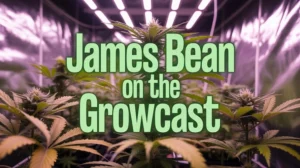
 13 Aug 2025
13 Aug 2025  11 min read
11 min read
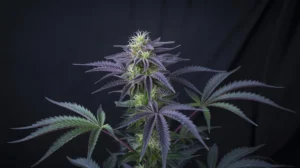
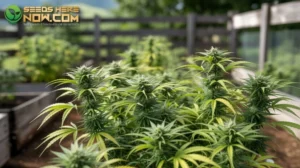
 February 26, 2025
February 26, 2025 


RESPONSES (0)
No responses yet. Be the first to respond!